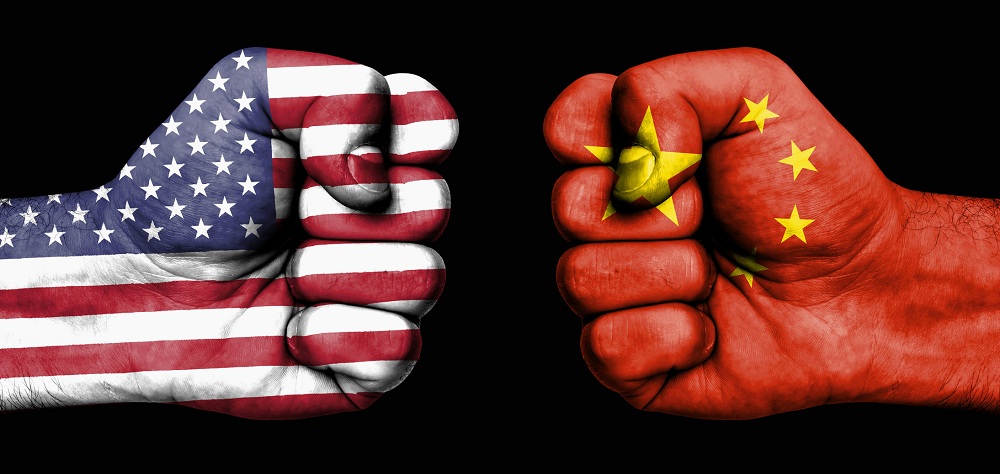Alwaght- The US president continues to impose his new tariffs on the foreign products, threatening to widen the mounting trade war between Washington and other economic heavyweights. In recent comments, Trump threatened on Friday that he will foist a 20 percent tax on the cars imported from the European states.
Earlier, he slapped China with $50 billion in tariffs on the construction machines, electricity facilities, and aerospace products under the excuse of fighting Beijing’s wresting of intellectual property and technology from the American companies. Taking effect from July 6, the tariffs were retaliated by China that imposed equal sanctions on US products like electric cars, alcohol, soybeans, and cotton. EU, too, slapped back on Friday after Trump announced tariffs on its aluminum and steel. According to the European Commission, the retaliatory levies will cover nearly $3 billion worth of US goods.
Many economists warn that Trump’s measures are setting the stage for a full-scale trade war with grave consequences to the global economy. But the president’s advisors argue that the new tariffs which are restricted to aluminum and steel are modest and not akin to Smoot-Hawley act that dramatically raised the taxes on foreign goods.
The Smoot-Hawley act raised the levies on the imported goods to protect the American businesses and farmers.
The law was passed in June 1930, imposing a 50-percent tariff on the imported goods. 20,000 products were covered by the measure.
Following the act approval, the foreign countries retaliated by increasing the tariffs on the American products. As a result, the foreign banks teetered on the brink of bankruptcy and the international trade slowed down. From 1929 to 1934, the global trade shrank by 66 percent, prompting the effects of “Great Depression” in the US.
Commercial war’s impacts
The economists warn that a trade conflict will leave direct influences on the involved countries’ economic growth. Presently, Trump threatens China with $450 billion worth of tariffs on its products if the Asian power fails to review its trade fashion. $450 billion tariffs equal 90 percent of the Chinese goods exported to the US last year.
“China’s illicit trade practices – ignored for years by Washington – have destroyed thousands of American factories and millions of American jobs. On April 3, 2018, the USTR announced,” an early April White House statement read.
Accordingly, Trump’s major goals revolve around protecting the American businesses, forcing a revision of Chinese trade models, and also restoring the balance in trade with foreign sides. But the experts argue that Trump action may slacken China growth and put strains on Beijing and play in hands of the US industries, but at the end of the road, Washington will not meet the Trump-favored results.
1. Inflation and decline in private consumption growth
Higher prices of Chinese goods will mean American consumers will suffer from higher inflation rates. The US retail stores are filled with the Chinese goods, which means the American consumers will suffer the trade battle ramifications. This automatically pushes down the private consumption rates.
But the effects of a commercial struggle between the two giants are not huge on the Chinese consumers. One of the reasons is that the US is not the Chinese consumer goods’ main origin. Despite the fact that private consumption rates are lower now, the consumers’ worries about a looming trade war do not prompt a total fall in China consumption. It is easier for Beijing to find alternative suppliers than the US. For instance, China can import soybeans and other food products from Latin America. But the American retailers should go through a struggle finding goods as cheap and abundant as the Chinese ones. The local American companies can fill the gaps only partially. Another trouble is that the home suppliers can hardly price their goods as low as the Chinese ones.
2. Lower Economic growth and employment rates
Economists warn that the new tariffs will hit hard the economic boost of the US. The Oxford Economics, a London-based advisory company, estimates that if Trump materializes his threat of $200 billion of levies on the Chinese products and Beijing responds in a mirror way, the US growth could slow by 0.3 percent next year. Michael J. Smart, Washington-based Rock Creeks Global Advisors’ chief, says that trade war can transform from a government-to-government battle to a massive fight with immense consequences for the American workers, farmers, and consumers. The past trade war proved damaging to the American workers. President George W. Bush imposed a 30 percent tariff on foreign steel imports in 2002. The measure backfired in the form of impact on employment, stripping some 200,000 US workers of their jobs in various manufacturing sectors.
The American companies are highly vulnerable to a Washington-Beijing trade fight. The smart devices maker Apple, for example, earns 18 percent of its profits from Chinese markets. Starbucks, another American giant, is making 11 percent of its profits from China consumers.
The US companies are heavily active in China with huge investment. The National Committee on United States-China Relations says the private American firms have invested some $256 billion in China since 1990.
For some American companies being caught in Washington-Beijing trade crossfire is highly costly. The Qualcomm chip giant, for instance, earns nearly 63 percent of its income from China partners. Other chip makers, too, rely heavily on China partnership. Qorvo earns over half and Intel 23 percent of its income from China.
Will China give in?
It seems that Trump predicts that Beijing will give in by helping fill the trade gap with the US ($336 billion as of last year), stopping squeezing technology from the American forms, and stopping cyber theft from the US.
But experts say as of now China has shown no signs of surrender. The analysts talk of Beijing’s plan to hone its technological developments. China 2025 Vision eyes high-tech firms establishment in robotics, electric vehicles, and other areas. Beijing has a smart tariff hit list. The list targets crops such as soybeans, cotton, and corn to deal a blow to rural America which lifted Trump to the presidency. Especially picking the soybeans for the ban is a strike on Trump camp of supporters. Nearly 60 percent of America soybeans go to China.



























